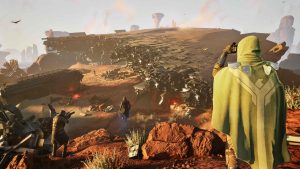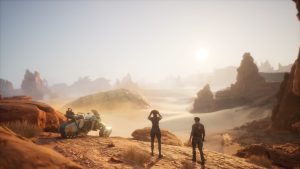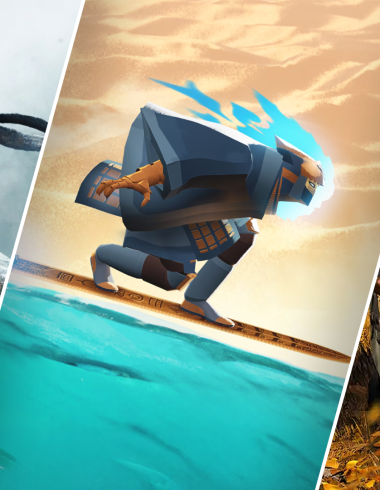How Dune: Awakening Pushes the Boundaries of Online Worldbuilding

Dune: Awakening brings something rare to the MMO world a fusion of large-scale survival and an open-ended sandbox where players shape their own fate. Initially, I doubted it could match the cinematic grandeur of Denis Villeneuve’s films, but after playing, I saw its true strength: the way its many elements intertwine.
This isn’t just about survival or massive multiplayer action. It’s about the tension of crossing dunes with a friend, knowing what lurks beneath. It’s carving out a life in an unforgiving world, soaring in an ornithopter, or charging across the sands with allies. It’s the thrill of strategic battles, political maneuvering, and shaping the world through the Landsraad. The beauty of Dune: Awakening isn’t found in one feature it’s how everything works together, creating an experience that feels genuinely alive.

Story Outline
Dune: Awakening begins like a classic RPG, placing you in the role of a prisoner facing a mysterious Bene Gesserit. Your choices appearance, origin, and mentor shape your character, leading to a pivotal moment where unseen forces push you to the infamous box of truth. Your mission: find the elusive Fremen hidden deep in Arrakis. The swelling score sets the tone for a cinematic journey.
As your ship is shot down, a Fremen spares you, only for the Emperor’s Sardaukar to attack. Left alone in the vast desert, the tutorial kicks in, covering survival essentials like crafting, hydration, and combat. Fast and intuitive mechanics dash-dodging, parrying, and free climbing create a fluid experience, while crafting is streamlined with a multi-purpose tool and accessible storage mechanics.
The game is structured into four phases: Survive, Protect, Expand, and Control, each marking progression in playtime and complexity. Early survival elements feel familiar, but the pacing stands out gathering and crafting are swift and rewarding, ensuring players focus on the broader experience. Months of beta feedback and Funcom’s expertise make for polished, intuitive systems. Within no time, you’re equipped, settled, and ready to carve your path across Arrakis.

Gameplay Mechanics
Base-building in Dune: Awakening is refreshingly smooth. Whether aligning with the Atreides or Harkonnen, players can select themed components, place a holographic blueprint, and construct instantly provided materials are on hand, which they often are. Even better, entire base designs can be saved and moved, allowing for flexible relocation across Arrakis or temporary outposts in the Deep Desert, where guild battles unfold before the weekly Coriolis Storms reset the landscape.
Beyond survival, the game weaves an engaging narrative. reminiscent of Paul’s visions in the second Dune film. One such trial transported me into a surreal realm of stealth and platforming, unlocking new abilities upon my return. While I haven’t played enough to grasp the full impact, it’s clear Spice plays a major thematic and mechanical role.
The game captivates with its unique blend of familiarity and novelty. Still, certain aspects like shallow combat and repetitive desert treks challenge its momentum. Yet, these are just fragments of a larger experience. As progression unfolds, exploration of urban hubs, faction dynamics, and guild interactions may further evolve the gameplay.
Even if deeper elements take time to shine, the survival fantasy is immediate: feeling the tremors of an approaching sandworm, diving for shelter from a rolling storm, or uncovering secrets buried in the rock. With Funcom’s expertise and ambitious systems in place, Dune: Awakening shows great promise it’s definitely one to watch.


